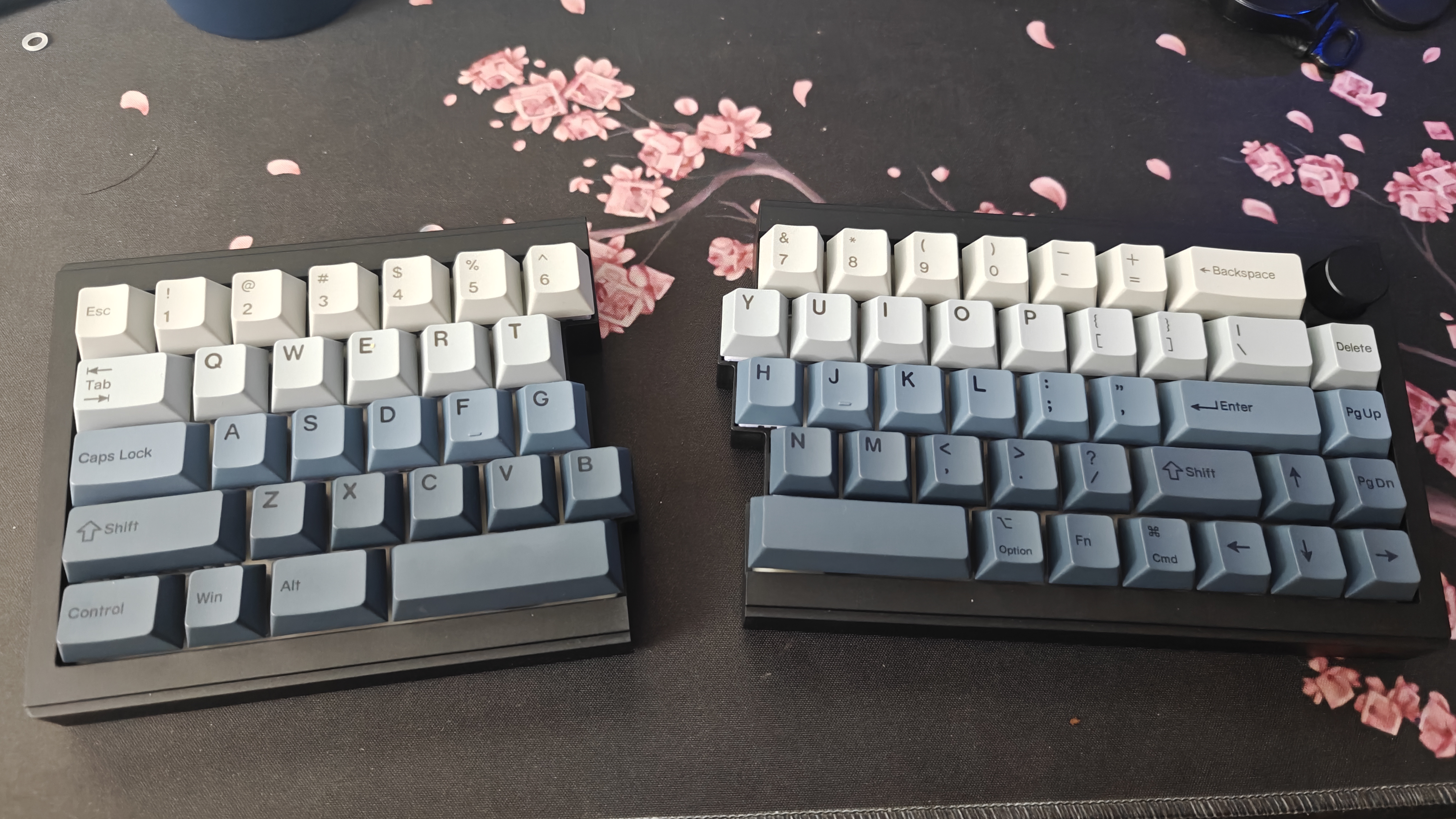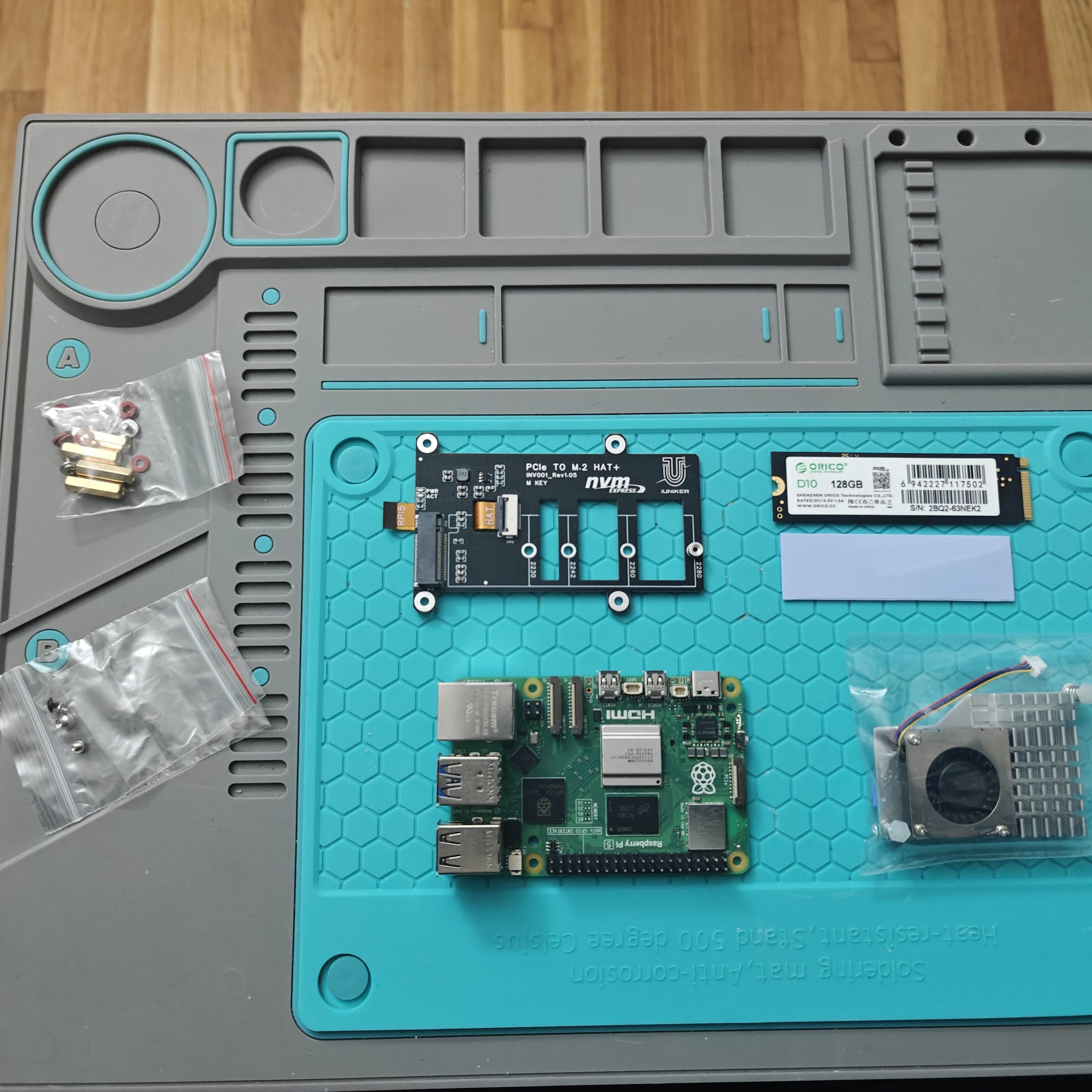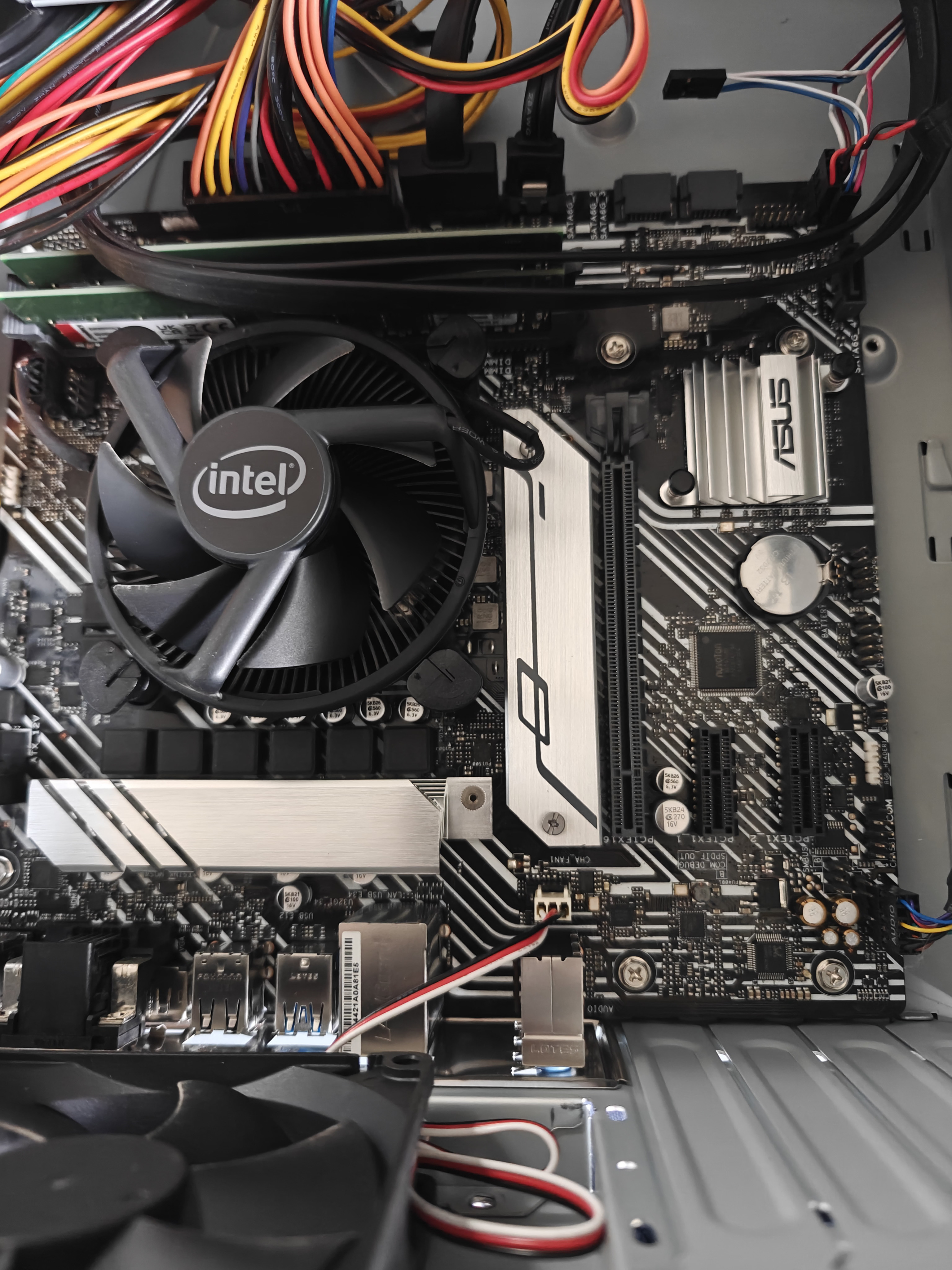Why I Built This
After getting hooked on mechanical keyboards, I wanted to build my own from scratch. The GMK67 was perfect for a first build - hot-swappable switches, straightforward assembly, and room to experiment with different switch types.
The vision: A lavender-themed keyboard with linear switches for letters (smooth, fast typing) and tactile switches for modifiers (distinct feedback).
Total cost: ~$130
The Build
Components:
- Board: GMK67 hot-swap PCB (65% layout)
- Switches (Letters): AKKO Lavender switches - Linear
- Switches (Modifiers): KTT Baby White switches - Tactile
- Keycaps: Lavender gradient PBT set
- Acquired: June 6, 2024
This is my second mechanical keyboard, but my first custom build from components.
Build Process
Step 1: Component Prep
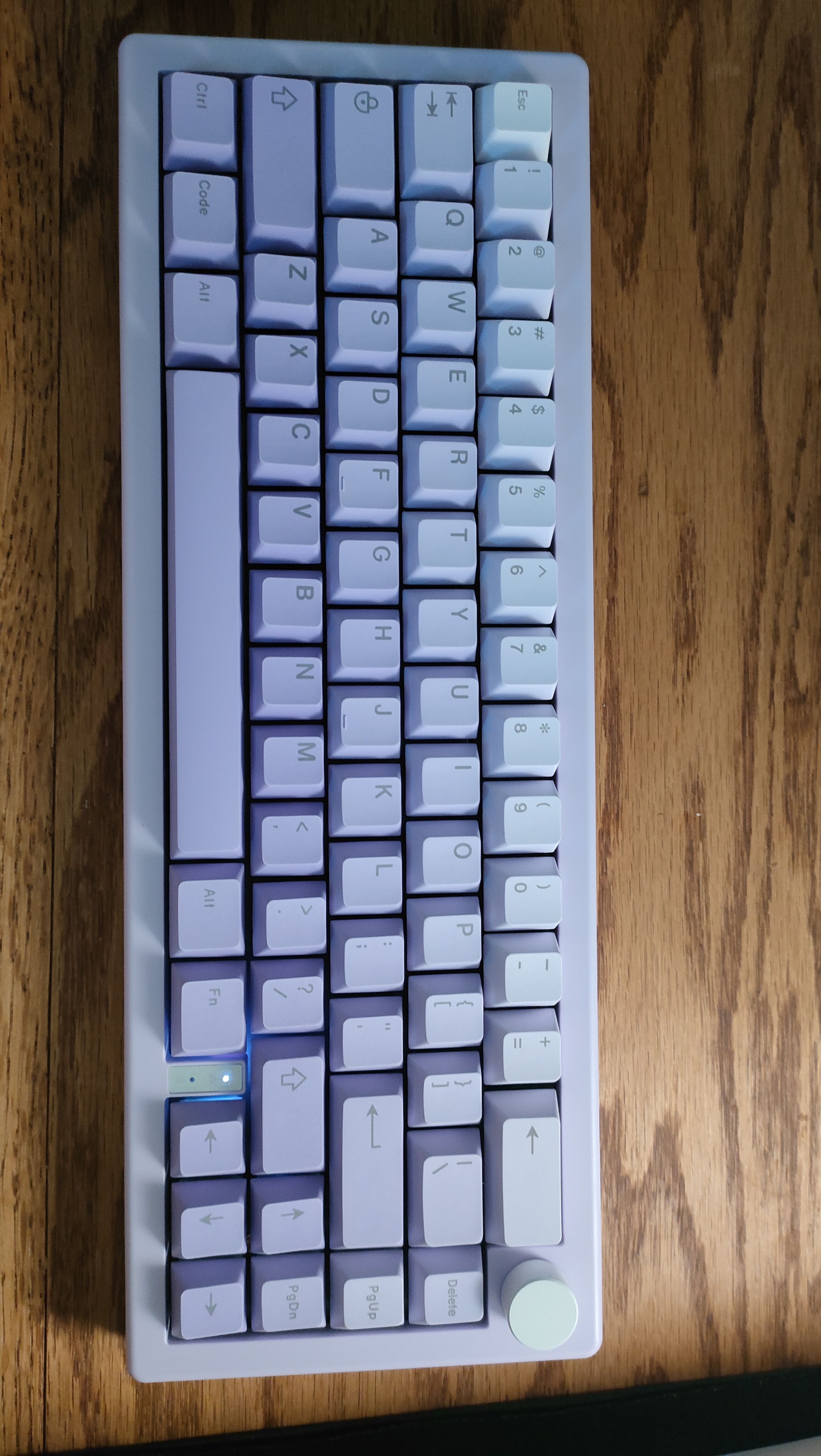
Hot-swap PCBs are beginner-friendly - no soldering required. The board has clear switch socket guides, so you can’t install switches backward unless you really try.
Key decision: Mixed switches for different key zones:
- AKKO Lavender (Linear) for alphanumeric keys - smooth typing experience
- KTT Baby White (Tactile) for modifiers - tactile bump helps identify function keys by feel
Step 2: Switch Installation
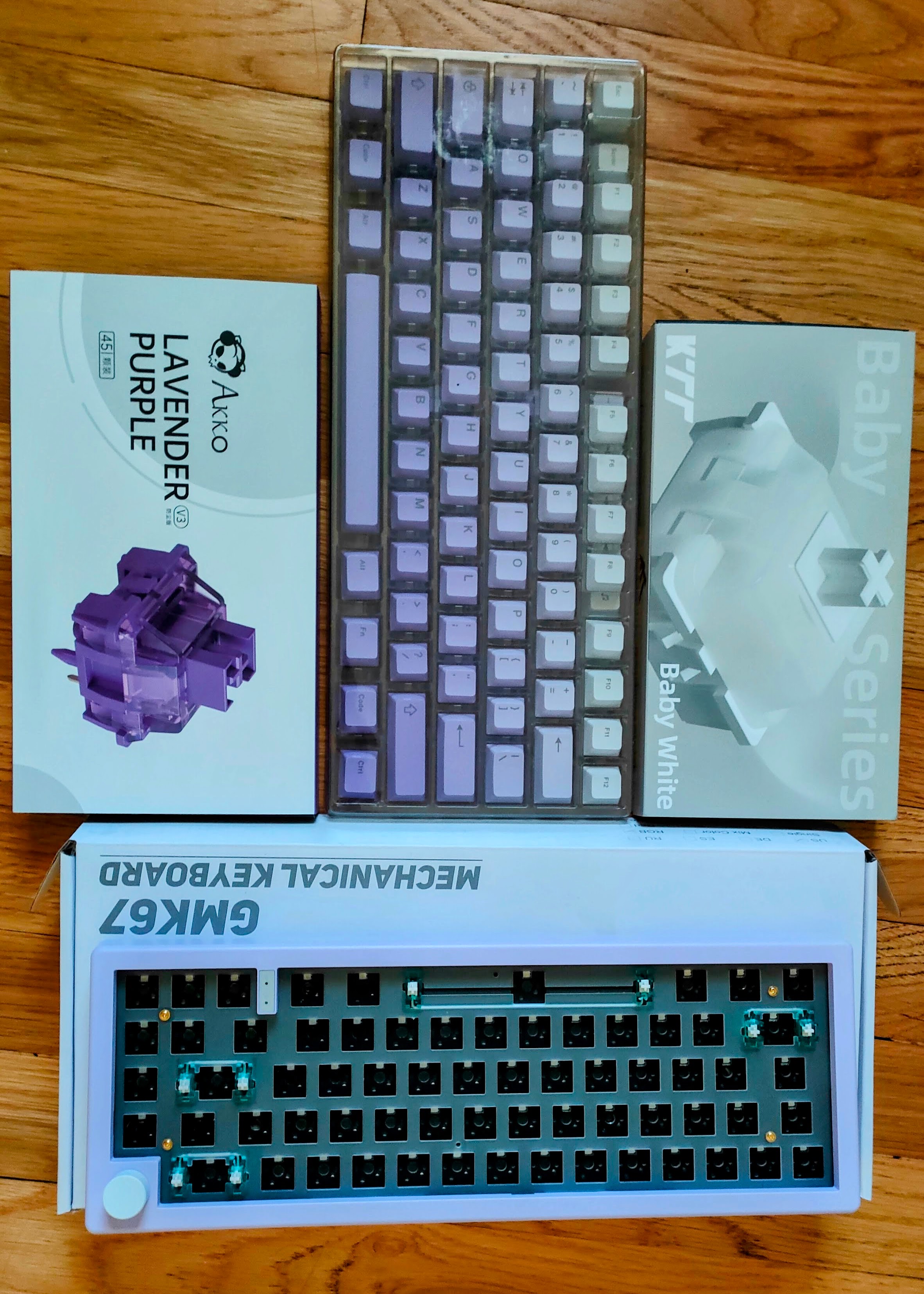
Installing switches was straightforward:
- Align switch pins with hot-swap sockets
- Press firmly until switch clicks into place
- Verify switch is flush with plate
Pro tip: The board itself guides proper orientation - just match the pins to the socket holes.
First-time experience: Perfect. Not a single bent pin, no switches installed incorrectly. If you can press buttons, you can build this keyboard.
Step 3: Keycap Installation
Watch the assembly process
The lavender gradient keycaps complete the aesthetic. PBT material feels solid and won’t develop shine from finger oils like ABS keycaps.
Sound Test & Results
Typing sound test with mixed switches
Typing experience:
- Lavender linear switches: Buttery smooth actuation, no tactile bump. Perfect for fast typing without finger fatigue
- Baby White tactile switches: Clear tactile feedback on modifiers helps identify keys without looking
- Keycap sound: Deep, satisfying thock from PBT material
Why mixed switches work:
- Letters see constant use - linear reduces finger strain
- Modifiers need distinction - tactile bump prevents accidental presses
- Sound variety adds character to typing
Difficulty Assessment
Rating: Easy
Why it’s genuinely easy:
- No soldering: Hot-swap PCB eliminates the biggest barrier to entry
- Clear orientation: Board guides prevent mistakes
- No tools required: Just your hands
- Forgiving design: Switches can be removed/repositioned if needed
Time investment:
- Unboxing and prep: 10 minutes
- Switch installation: 20 minutes
- Keycap installation: 10 minutes
- Total: ~40 minutes
Skills needed:
- Ability to press small components firmly
- That’s it
Perfect first build: If you’re considering custom keyboards but intimidated by complexity, this is your entry point.
Repairability Score: 10/10
- Hot-swap design = instant switch replacement
- No soldering = no permanent modifications
- Every component is user-replaceable
- Keycaps pop on/off in seconds
Would I Recommend This Build?
Absolutely yes, especially if:
- First custom keyboard build
- Want to experiment with different switches
- Like the 65% compact layout (arrow keys + some function keys)
- Prefer smooth linear switches for typing
Budget breakdown (~$130 total):
- GMK67 PCB kit: ~$50
- AKKO Lavender switches (70): ~$25
- KTT Baby White switches (20): ~$10
- Lavender gradient PBT keycaps: ~$35
- USB cable: ~$10
The best part: Hot-swap design means I can swap switches anytime. Want clickier switches? Pop the old ones out, press new ones in. Done in 5 minutes.
This build proved custom keyboards aren’t intimidating - they’re just expensive LEGO sets that you type on.
Build completed: June 6, 2024
Difficulty: Easy - Perfect first-time keyboard build

